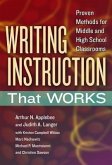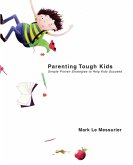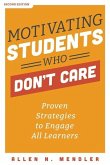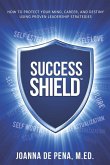The Essence of Effective and Engaging Literacy Learning K-2: What We Really Know! Multiple Paths to Literacy K-2 Proven High-Yield Strategies to Scaffold Engaging Literacy Learning across the Curriculum Inquiry, Play, Art, Technology, and Self-Regulation through Intentional Teaching Multiple Paths to Literacy K-2 (2016), Miriam's latest book, equips teachers of young children with practical high-yield strategies, assessment tools, and motivating activities, all steeped in strong research and easily applicable in all kinds of learning environments. Included are many authentic writing samples, photos, mini-lessons, engaging activities and teacher stories that truly enliven the instructional methods. Sought-after author and speaker Miriam P. Trehearne demonstrates how to scaffold play, self-regulation, art, inquiry, technology and literacy learning effectively while linking assessment to instruction. There are multiple paths to literacy learning. That being said, we do know that there are some proven high-yield strategies that do make a huge difference no matter the path taken. The teachers celebrated in this research-based book demonstrate many high-yield strategies and instructional approaches by providing hundreds of practical ideas that teachers can put to use in their classrooms tomorrow. In the process, responses are provided for the following frequently asked questions and more: How does research describe the practice of the most effective/accomplished K-2 teachers? What do they do? -How can play and literacy learning effectively support one another? -How do mature play and immature play differ? -What do engaging and effective learning centres look like? -What is self-regulation and how does one scaffold it? -What does inquiry-based learning really mean? -What does the research say about how effective inquiry-based learning really is, in K-2 classrooms? -What does effective inquiry-based learning look like? -What is self-regulation and how does one develop this in K-2 classrooms? -What are the high-yield strategies or non-negotiables of effective literacy teaching and learning in K-2? -What is phonological awareness and how important is it in K-2? -How much time should be allocated specifically for language arts each day and how does one fit it all in? -How can one effectively organize the classroom? -What effect do classroom colors have on student learning? -How can one keep students meaningfully engaged during the language arts block? What are "the other kids doing" during guided reading? -How should phonics be taught? -How many high-frequency words (sight words) are crucial for students to know by the end of kindergarten, Grade 1, and Grade 2? Which words are they? -What is fluency and how does one support its development? -What are the researched-based strategies that support reading comprehension? -How can one effectively assess and support oral language and vocabulary development? -How can we most effectively differentiate for ELL and second dialect learners? -Which literacy assessments and documentations should teachers use and how can they help to drive instruction? -How can one combine the writing process, writing genres, and writing traits or characteristics during writing workshop? -How can one motivate reluctant writers and readers? -What are effective mini-lessons to use when teaching writing in K-2? -How does one effectively assess and teach word work and spelling? Which spelling rules work in K-2? - What does effective early intervention look like? -How can technology be used as a vehicle to support literacy learning in the classroom? -What role can parents realistically play in support of literacy learning and how might teachers enhance this home-school connection? -How does literacy support the arts and vice versa? Fourteen research-based yet practical chapters provide the essence of what we know about excellent








